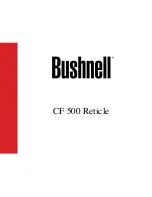
7
Focusing
•
Place a specimen on the stage and fix it with the holders.
•
Start your observations with the lowest magnification objective and select a specimen segment for detailed
research. Then move the specimen to center the selected segment in the field of view, to make sure it keeps
centered when the objective is changed to a more powerful one. Once the segment is selected, you should center
its image in the microscope’s field of view as precisely as possible. Otherwise, the desired segment might fail to
center in the field of view of the higher power objective. Now you can switch to a more powerful objective by
rotating the revolving nosepiece. Adjust the image focus if required.
• Move the specimen to place its thickest part exactly under the objective.
• Adjust sharpness, rotating the focusing knob, until you see a sharp image.
Caution!
The objective should not touch
the specimen, otherwise the objective or/and the specimen might be damaged.
The microscope kit includes:
microscope, 10x eyepiece, spare bulb, empty flask (3pcs), slides and cover slips (3pcs
each), slide stickers (3pcs), plastic tools (scalpel, pipette, spatula, forceps, dissecting needle).
CAUTION! Never direct the mirror towards the Sun, as it may ruin your eyesight and even couse blindness.
Telescope
CAUTION! Never look directly at the Sun — even for an instant — through your telescope or finderscope
without a professionally made solar filter that completely covers the front of the instrument, or permanent
eye damage may result. To avoid damage to the internal parts of your telescope, make sure the front end of
the finderscope is covered with aluminum foil or another non-transparent material. Children should use the
telescope under adult supervision only.
All parts of the telescope will arrive in one box. Be careful when unpacking it. We recommend keeping the original
shipping containers. In the event that the telescope needs to be shipped to another location, having the proper
shipping containers will help ensure that your telescope survives the journey intact. Be sure to check the box carefully,
as some parts are small. All screws should be tightened securely to eliminate flexing and wobbling, but be careful not
to overtighten them, as that may strip the threads.
During assembly (and anytime, for that matter), do not touch the surfaces of the optical elements with your fingers.
The optical surfaces have delicate coatings on them that can easily be damaged if touched. Never remove lenses or
mirrors from their housing, or the product warranty will be null and void.
Mount assembly
•
On the lower part of the tube, there is a mounting plate with a threaded hole. Align it with the fastening screw of
the tripod.
•
Screw the tripod fastening screw into the hole on the tube mounting plate in order to secure the telescope tube.
•
Do not overtighten the screw because you might accidently damage the screw thread.
Optical finderscope assembly and alignment
Unthread two screws in the back of the telescope tube. Place the finderscope base above the holes on the tube. Lock
the finderscope base into position by tightening the screws.
Optical finderscopes are very useful accessories. When they are correctly aligned with the telescope, objects can be
quickly located and brought to the center of the view. Turn the scope end in and out to adjust focus.
To align the finderscope, choose a distant object that is at least 550 yards (500 meters) away and point the telescope
at the object. Adjust the telescope so that the object is in the center of the view in your eyepiece. Check the
finderscope to see if the object is also centered on the crosshairs. Use three adjustment screws to center the
finderscope crosshairs on the object.
Optical accessories assembly
Loosen the focuser thumbscrew. Insert the diagonal mirror into the focuser tube and retighten the thumbscrew to hold
the diagonal mirror in place. Then, insert the desired eyepiece into the diagonal mirror and secure it by retightening
the thumbscrew.
Focusing
Slowly rotate the focus knobs one way or the other until the image in the eyepiece is sharp. The image usually has to
be finely refocused over time due to small variations caused by temperature changes, flexures, etc.



































